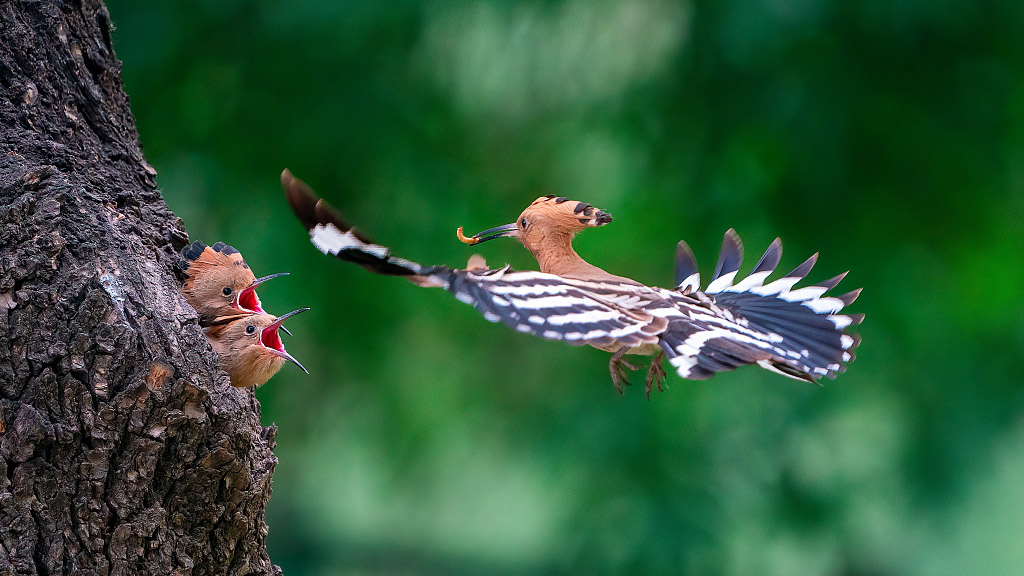
A hoopoe and her chicks. /VCG
A hoopoe and her chicks. /VCG
Chinese scientists confirmed that bird ovaries can be preserved in fossils, providing evidence for the reproductive evolution of birds.
Like most animals, dinosaurs, which are the ancestor of birds, had two ovaries, while modern birds have only the left ovary. When birds lost the right ovary remains a mystery.
In 2013, scientists from the Institute of Vertebrate Paleontology and Paleoanthropology (IVPP) under the Chinese Academy of Sciences studied bird specimens dating back about 120 million years. The research found that only the left ovary was preserved in early birds.
The scientists concluded that during the evolution from dinosaurs to birds, the disappearance of the right ovary might have occurred. This phenomenon took place, possibly as a way to lose weight to fly efficiently.
After the study was published, some researchers questioned whether soft tissues could be preserved in fossils for such a long time. They inferred that the ovary fossils might actually be undigested plant seeds.
The research team studied the fossils using methods including scanning electron microscopy, energy dispersive spectroscopy and traditional ground-sectioning techniques. The results showed that the tissue fossils consist of muscle and vascularized structure and can be identified as ovaries instead of plant seeds.
The study was published in the journal Communications Biology.
(Cover image via VCG.)
(If you want to contribute and have specific expertise, please contact us at nature@cgtn.com)
Source(s): Xinhua News Agency